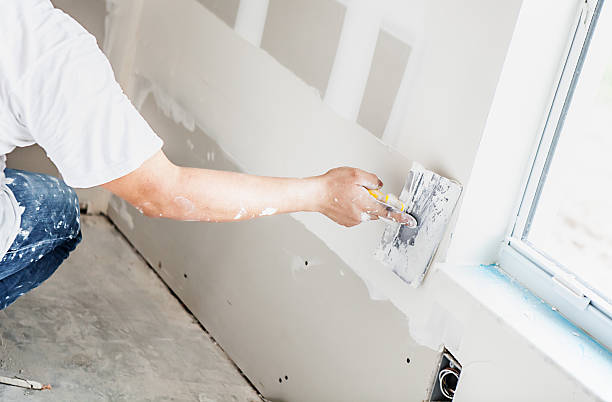Unveiling the Most Common Drywall Issues in Denver
Drywall is a ubiquitous element in homes and businesses, providing a smooth and clean surface that contributes to the overall aesthetic appeal. However, like any building material, drywall is not immune to issues that can arise over time. In Denver’s unique climate, certain factors can contribute to specific challenges for drywall. In this comprehensive guide, we’ll explore the most common drywall issues in Denver and provide insights into effective drywall repair solutions.
Understanding Denver’s Climate Impact on Drywall
Denver’s climate, characterized by low humidity, fluctuating temperatures, and occasional extreme weather conditions, can significantly impact drywall. Understanding how these factors contribute to common drywall issues is crucial for implementing effective repair strategies.
1. Drywall Cracks
Causes:
- Temperature variations causing contraction and expansion of building materials.
- Settling of the structure over time.
- Insufficient framing support.
Repair Strategies:
- Fill small cracks with joint compound.
- Use mesh tape for larger cracks, followed by joint compound application.
- Address underlying structural issues contributing to settling.
2. Water Damage and Mold
Causes:
- Leaks from plumbing or roofing.
- High humidity levels.
- Flooding or water seepage.
Repair Strategies:
- Identify and fix the source of water intrusion.
- Replace damaged drywall sections.
- Treat mold with appropriate cleaning solutions and ensure proper ventilation.
3. Nail Pops
Causes:
- Shifting of the building structure.
- Settling of the foundation.
- Insufficient installation techniques.
Repair Strategies:
- Hammer the popped nail back in.
- Add additional screws or nails to secure the drywall.
- Apply joint compound and sand for a smooth finish.
4. Textured Drywall Damage
Causes:
- Impact damage from furniture or other objects.
- Poor application or aging of the textured finish.
Repair Strategies:
- Patch damaged areas with joint compound.
- Match the existing texture using a spray texture repair kit.
- Sand and paint for a seamless finish.
5. Peeling or Bubbling Paint
Causes:
- Moisture infiltration.
- Poor paint adhesion.
- Use of low-quality paint.
Repair Strategies:
- Identify and fix the source of moisture.
- Scrape off loose or bubbling paint.
- Apply a high-quality primer and repaint.
6. Sagging or Drooping Drywall
Causes:
- Insufficient support from framing.
- Excessive weight from moisture absorption.
- Aging of the drywall.
Repair Strategies:
- Add additional screws to secure sagging sections.
- Replace severely damaged drywall panels.
- Address underlying structural issues if necessary.
7. Joint Tape Separation
Causes:
- Poor installation techniques.
- Insufficient application of joint compound.
- Shifting of the building structure.
Repair Strategies:
- Remove loose tape and apply a new layer of joint compound.
- Ensure proper feathering to blend with the surrounding area.
- Use high-quality joint tape for added durability.
8. Stress Cracks in Corners
Causes:
- Settling of the structure.
- Insufficient corner bead installation.
- Movement in the building foundation.
Repair Strategies:
- Remove loose or damaged corner bead.
- Apply a new layer of joint compound and feather the edges.
- Address underlying structural issues contributing to settling.
9. Texture Matching Challenges
Causes:
- Aging of the existing texture.
- Poor initial application techniques.
- Limited availability of matching texture products.
Repair Strategies:
- Use a texture repair kit to match the existing texture.
- Experiment on a small, inconspicuous area before applying to the entire wall.
- Seek professional assistance for complex texture matching.
10. Fire Damage
Causes:
- Accidental fires.
- Smoke damage affecting the drywall surface.
Repair Strategies:
- Remove severely damaged sections.
- Clean smoke residues with appropriate solutions.
- Patch and repaint affected areas.
Hiring Professional Services for Drywall Repair in Denver
While some minor drywall repairs services in denver can be handled as DIY projects, it’s essential to recognize when professional intervention is necessary. Denver-based drywall repair professionals have the expertise to address specific challenges posed by the local climate and can deliver lasting solutions.
Conclusion
Navigating the common drywall issues in Denver requires a combination of understanding the unique climate factors and implementing effective repair strategies. From cracks and water damage to texture matching challenges, each issue demands a tailored approach for successful resolution. Whether you’re tackling small repairs yourself or seeking professional assistance, addressing drywall issues promptly ensures the longevity and aesthetic appeal of your interior spaces.
FAQs
-
How can I prevent drywall issues in Denver’s climate?
- Ensure proper ventilation to control humidity, address water leaks promptly, and monitor the foundation for settling issues. Regular maintenance and timely repairs can prevent many common drywall issues.
-
Is it necessary to hire professionals for drywall repair?
- While some minor repairs can be DIY projects, professional services are recommended for complex issues, water damage, or extensive repairs. Professionals have the expertise to address specific challenges and ensure lasting solutions.
-
Can I paint over repaired drywall myself?
- Yes, once the drywall repair is complete, you can paint over the repaired areas. Ensure that the repaired sections are smooth and adequately primed before applying paint.
-
How can I match the existing texture when repairing drywall?
- Texture matching requires careful application and experimentation. Use texture repair kits, and if in doubt, seek professional assistance for complex texture matching challenges.
-
What should I do if I discover mold on my drywall?
- Identify and address the source of moisture causing the mold. Clean the affected areas with appropriate solutions, ensure proper ventilation, and consider consulting professionals for extensive mold issues.


